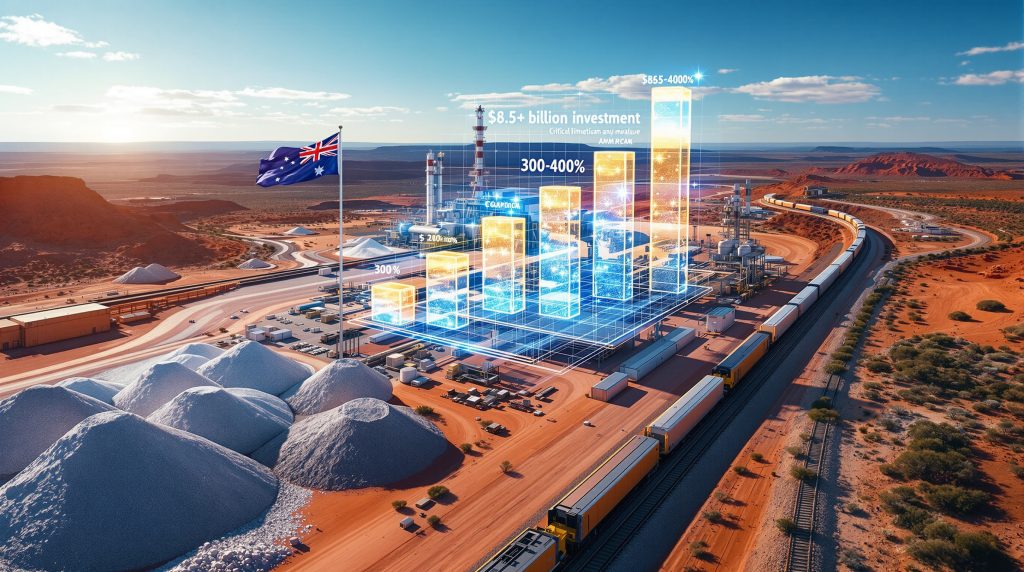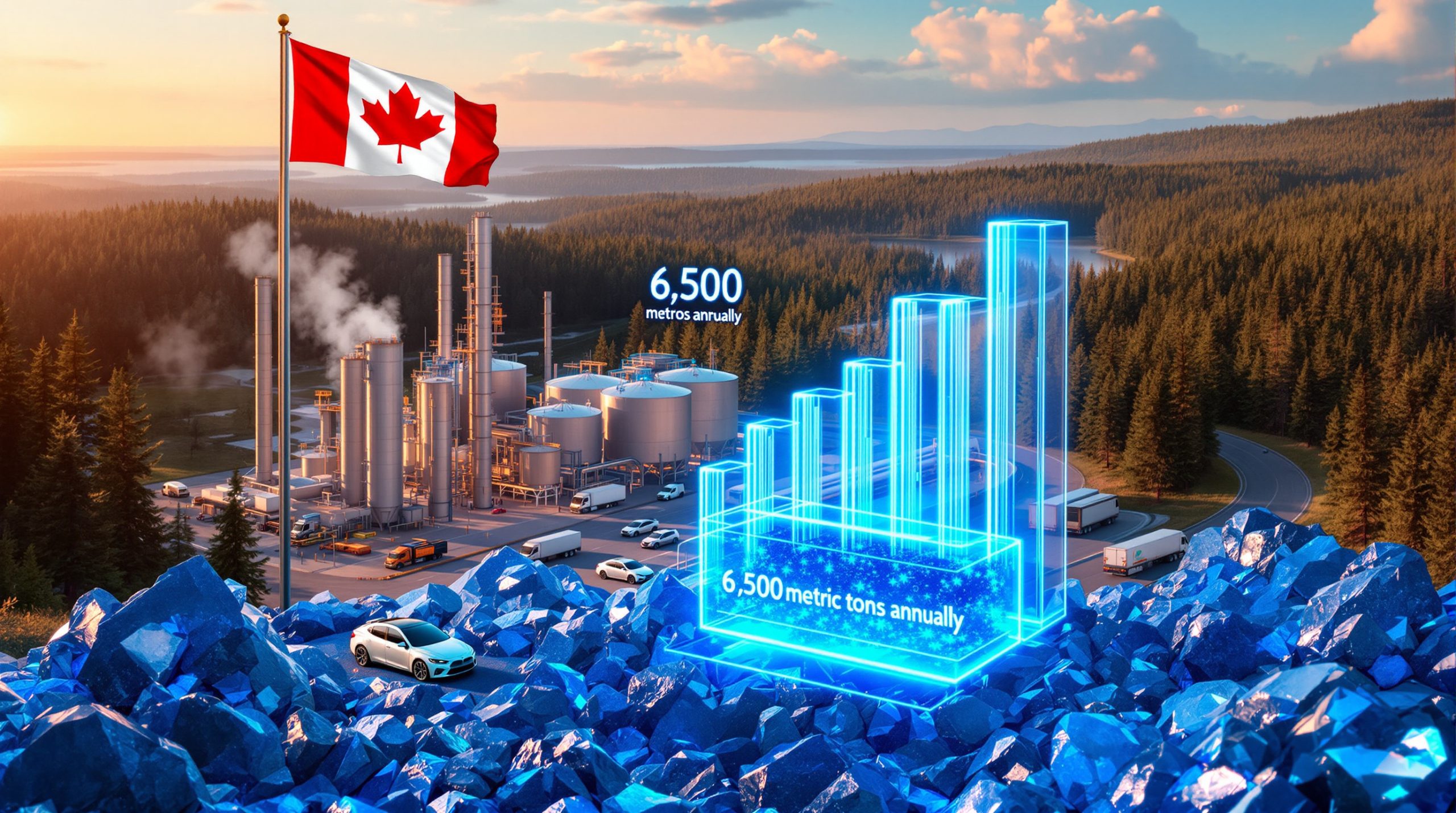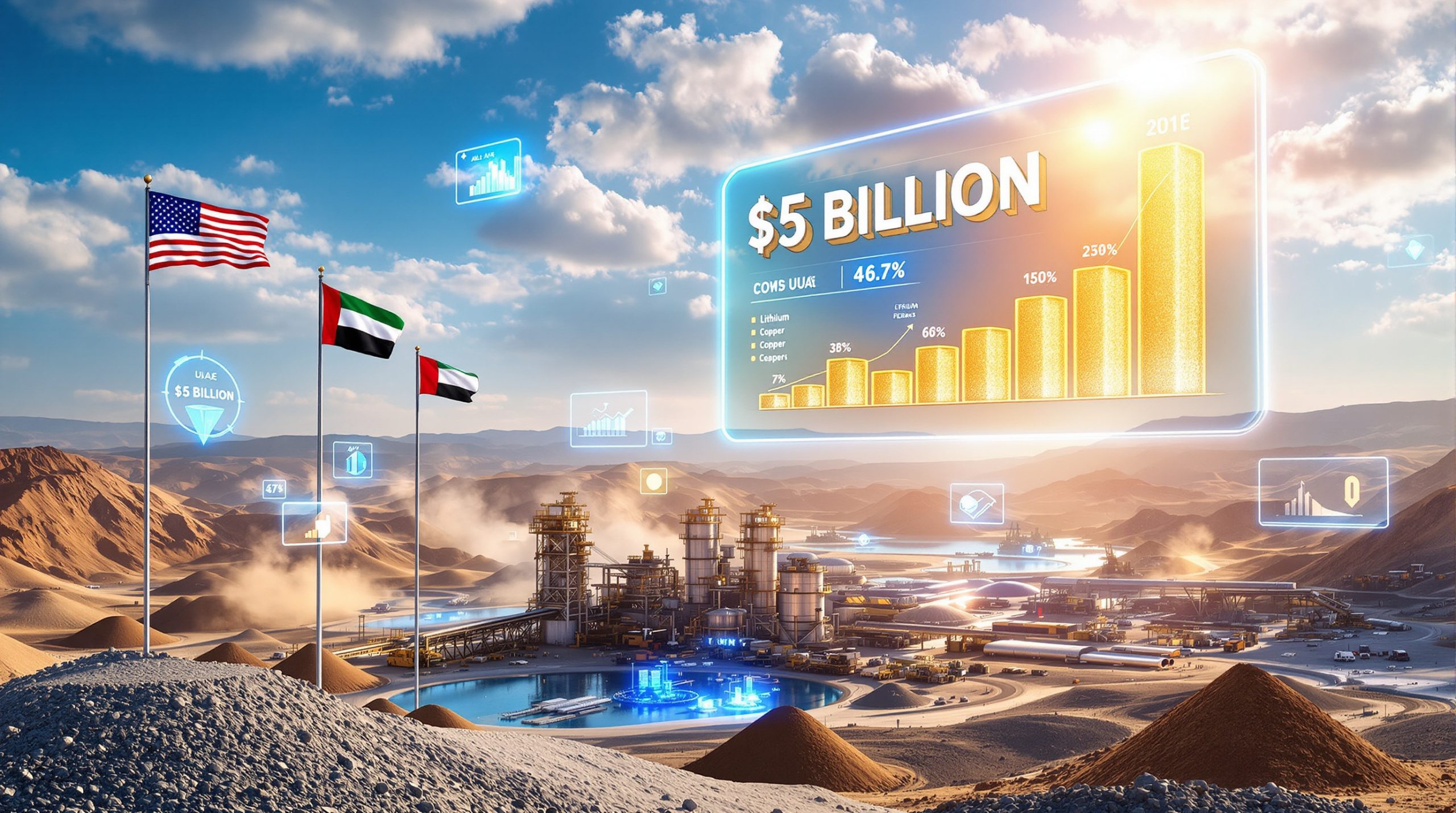Australia's strategic minerals sector stands at a pivotal moment as the nation deepens its partnership with the United States in critical minerals development. Understanding what the critical minerals deal means for Australia reveals more than a simple trade agreement; it signals a fundamental restructuring of global supply chains that have been dominated by single-source dependencies for decades. This collaboration, furthermore, represents a significant shift towards establishing Australia as a key player in processing rather than just extracting these valuable resources.
The partnership encompasses comprehensive investment frameworks targeting lithium, nickel, rare earth elements, graphite, and other materials essential to modern technology infrastructure. These minerals form the backbone of everything from smartphone batteries to advanced military systems, making their secure supply a matter of national security for both nations.
Core Investment Framework and Financial Mechanisms
The financial architecture of this partnership involves multiple funding streams designed to accelerate both extraction and processing capabilities across Australia. Government commitments from both nations aim to leverage private sector investment through risk-sharing mechanisms and loan guarantee programs.
The U.S. Export-Import Bank has already demonstrated its commitment to Australian critical minerals projects, providing $650 million in financing for Syrah Resources' Vidalia facility in Louisiana, which processes Australian graphite for battery applications. This model of cross-border processing partnerships illustrates the integrated approach both nations are pursuing.
Investment Structure Overview:
- Direct government funding commitments for joint exploration and development projects
- Export credit facilities to reduce project financing risks
- Technology sharing agreements to accelerate processing capability development
- Infrastructure investment coordination for ports, rail, and processing facilities
Processing Technology and Industrial Development Focus
The partnership emphasises moving beyond Australia's traditional role as a raw materials supplier toward integrated processing operations. This transformation addresses the current reality where Australia exports approximately 95% of its lithium as spodumene concentrate, primarily to Chinese processing facilities, then reimports finished battery chemicals at significantly higher prices.
Processing technology transfer represents a critical component of the agreement. Advanced refining techniques for lithium hydroxide production, rare earth separation processes, and battery-grade material manufacturing will enable Australia to capture substantially more value from its mineral endowments.
The price differential between raw materials and processed products demonstrates the economic opportunity: spodumene concentrate typically trades between $1,000-$1,500 per tonne, while battery-grade lithium hydroxide commands $12,000-$25,000 per tonne equivalent, representing an 8-15 times price premium despite processing costs.
Strategic Importance for Global Supply Chain Security
Current global supply chain vulnerabilities have created strategic dependencies that both Australia and the United States seek to address through this partnership. Consequently, the critical minerals energy security implications extend far beyond commercial considerations, encompassing national defence and technological sovereignty.
Supply Chain Concentration Analysis
China currently processes approximately 87-90% of global rare earth oxides, controls 73% of lithium-ion battery cell production capacity, and refines about 60% of global lithium, 65% of cobalt, and 90% of rare earth elements. This concentration creates potential chokepoints for industries dependent on these materials.
The strategic implications extend beyond commercial considerations. A single F-35 fighter aircraft requires approximately 920 pounds of rare earth materials, whilst Virginia-class submarines need roughly 9,200 pounds of rare earth permanent magnets. Such requirements make alternative supply sources a national security priority.
Defence and Technology Applications
Critical minerals support numerous defence and civilian technology applications:
- Advanced radar and communication systems requiring rare earth magnets
- Satellite technology dependent on specialised alloys and electronic components
- Cybersecurity infrastructure utilising various processed minerals
- Electric vehicle manufacturing requiring lithium, nickel, and graphite
- Wind turbine production needing approximately 600kg of rare earth permanent magnets per 3MW offshore unit
Industry Sectors Positioned for Major Transformation
The expanded critical minerals capacity will create cascading effects across multiple Australian industries, with some experiencing more dramatic changes than others based on their mineral intensity and current supply chain dependencies. For instance, the development of a critical minerals strategy will reshape how Australian companies approach resource development and value-added processing.
Renewable Energy Infrastructure Development
Australia's renewable energy expansion creates substantial domestic demand for critical minerals. Wind turbine manufacturing requires rare earth permanent magnets, whilst solar panel production depends on silver (10-20 grams per panel), copper, aluminium, and specialised semiconductors containing gallium, indium, and tellurium for advanced photovoltaic technologies.
The International Energy Agency projects lithium demand for clean energy technologies will increase by 400% by 2030 under current policies, reaching 600% under sustainable development scenarios. This growth trajectory positions Australia's domestic renewable energy sector as a major consumer of locally processed materials.
Battery Manufacturing and Electric Vehicle Industry
Battery manufacturing represents one of the most mineral-intensive aspects of electric vehicle production. Lithium-ion batteries contain natural and synthetic graphite comprising 15-28% of total battery weight, whilst cathode materials containing nickel, cobalt, lithium, and manganese represent 30-40% of battery mass depending on chemistry.
Critical Minerals Content by Application:
| Mineral | Application | Content per Unit | Market Growth Projection |
|---|---|---|---|
| Lithium | EV batteries | 5-15kg per vehicle | 400-600% by 2030 |
| Nickel | High-energy batteries | 30-50kg per vehicle | 250% by 2030 |
| Graphite | Battery anodes | 50-100kg per vehicle | 300% by 2030 |
| Rare earths | EV motors | 1-3kg per vehicle | 200% by 2030 |
Data Centre and Artificial Intelligence Infrastructure
Australia's growing data centre infrastructure supporting artificial intelligence applications creates additional demand for critical minerals through specialised cooling systems, uninterruptible power supplies, and advanced semiconductor components. These facilities require substantial backup power capacity using battery systems that depend on processed lithium, nickel, and other materials.
Economic Impact on Australia's Industrial Landscape
The partnership's economic implications extend far beyond direct mining operations, influencing regional development patterns, employment structures, and industrial policy frameworks across multiple states and territories. However, understanding what the critical minerals deal means for Australia requires examining both opportunities and challenges in workforce development.
Regional Development and Employment Patterns
Australia's critical minerals sector currently employs approximately 13,000 people directly, within a broader mining workforce of 269,000. The processing expansion enabled by this partnership will create different employment profiles compared to traditional extraction operations.
Processing facilities require specialised roles including metallurgists, chemical engineers, process operators, and maintenance technicians. These positions typically require 3-7 years of training and experience, creating workforce development challenges as the industry scales.
Western Australia hosts approximately 70% of Australia's lithium mining operations, concentrated in the Pilbara region. The addition of processing capabilities will diversify regional economies beyond extraction-only activities, potentially creating more stable employment patterns less vulnerable to commodity price volatility.
Infrastructure Investment Requirements
Processing operations demand substantially different infrastructure compared to raw material extraction and export. Lithium hydroxide production requires approximately 15,000 litres of water per tonne of product, necessitating secure water supplies and waste management systems.
Power requirements for processing operations typically exceed those of mining operations by factors of 3-5, creating opportunities for renewable energy integration but also substantial infrastructure investment needs. Specialised transport and storage facilities must accommodate processed chemicals with different handling requirements compared to raw ores.
Skills Development and Workforce Challenges
The Minerals Council of Australia projects a shortage of 120,000 workers across the resources sector by 2030, with specialised processing roles facing particularly acute shortages. This skills gap represents both a challenge and an opportunity for educational institutions and workforce development programmes.
Processing technology transfer requires not only equipment and techniques but also the human expertise to operate and maintain complex chemical processing systems. Partnership agreements include provisions for technical training and knowledge transfer to build Australian processing capabilities.
Implementation Challenges and Risk Factors
Whilst the partnership offers significant opportunities, successful implementation faces various technical, regulatory, and market challenges that require careful navigation and risk management strategies. Moreover, Australia's critical minerals reserve capabilities must be developed alongside processing infrastructure.
Environmental and Regulatory Considerations
Processing operations typically generate more complex environmental impacts than extraction alone. Lithium refining produces approximately 1.0-1.5 tonnes of CO2 equivalent per tonne of lithium carbonate equivalent using current technologies, requiring emissions management strategies.
Rare earth processing creates additional challenges through radioactive waste streams containing thorium and uranium that require specialised management under Australian radiation safety regulations. Processing facilities must comply with National Pollutant Inventory reporting requirements and state-level environmental protection frameworks.
The Environment Protection and Biodiversity Conservation Act 1999 governs major project approvals, with processing facilities potentially requiring comprehensive environmental impact assessments depending on scale and location.
Technical and Market Integration Challenges
Key Implementation Challenges:
- Integration of new processing technologies with existing mining operations
- Development of reliable supply chains for processing chemicals and equipment
- Quality control systems to meet battery-grade material specifications
- Waste management systems for processing byproducts
- Competition with established processing facilities in Asia
Market Competition and Industry Dynamics
The partnership must navigate existing market relationships and competitive dynamics. Many Australian mining companies have established long-term supply agreements with Chinese processors, creating potential conflicts as domestic processing capabilities develop.
Processing economics depend heavily on achieving sufficient scale to justify capital investments. Individual projects may require minimum throughput levels that exceed single-mine production capacity, necessitating industry coordination or joint ventures.
Timeline for Implementation and Benefit Realisation
The partnership's benefits will materialise across different timeframes, with some impacts visible immediately whilst others require years of infrastructure development and market establishment. Additionally, what the critical minerals deal means for Australia becomes clearer as implementation milestones are achieved.
Near-Term Developments (12-24 months)
Immediate impacts include increased exploration and feasibility study activity as companies position for expanded processing opportunities. Project development activity has already accelerated, with several Australian companies announcing processing facility studies since the partnership's announcement.
Enhanced investor confidence in the Australian critical minerals sector has become evident through increased equity fundraising activity and international investment interest. Diplomatic and trade relationship strengthening provides broader benefits for Australian resource companies seeking international partnerships.
Medium-Term Transformation (3-7 years)
Major processing facilities typically require 2-4 years from final investment decision to first production. IGO Limited's Kwinana lithium refinery achieved full capacity of 24,000 tonnes per annum of lithium hydroxide in 2023, demonstrating feasible development timelines for similar projects.
Regional employment growth will become substantial as multiple processing facilities reach operational status. Supporting infrastructure development, including specialised transport networks and service industries, will create additional employment opportunities beyond direct processing operations.
Long-Term Strategic Impact (7-15 years)
Complete supply chain integration from mining through to finished battery materials represents the partnership's ultimate objective. This transformation could position Australia as a comprehensive alternative to concentrated Asian supply chains.
Projected Development Timeline:
| Phase | Duration | Key Milestones | Expected Outcomes |
|---|---|---|---|
| Initial | 1-2 years | Feasibility studies, permits | Project approvals |
| Construction | 2-4 years | Facility construction | First production |
| Ramp-up | 1-3 years | Capacity optimisation | Full-scale operations |
| Market establishment | 3-5 years | Customer qualification | Supply chain integration |
Historically, mining project development from discovery to production averages 10-15 years, whilst processing facilities can be developed more rapidly at 2-4 years from final investment decision. The partnership's success depends on accelerating these timelines through coordinated government support and streamlined approval processes.
Comparison with International Critical Minerals Initiatives
Australia's partnership approach can be evaluated against other nations' critical minerals strategies, revealing different emphases and implementation methods across various jurisdictions. For example, the European CRM facility represents a different approach to supply chain security.
European Union Critical Raw Materials Strategy
The EU Critical Raw Materials Act, adopted in March 2024, establishes specific domestic targets: extracting at least 10% of annual consumption, processing at least 40%, and recycling at least 15% of critical raw materials by 2030. This represents a more regulatory approach compared to the Australia-US investment-focused partnership.
The EU identifies 34 critical raw materials and 17 strategic raw materials, with emphasis on supply security through diversification rather than production capacity expansion. Strategic stockpiling and demand reduction through material efficiency receive greater emphasis than in the Australia-US approach.
Canada's Critical Minerals Strategy
Canada's approach focuses on indigenous community partnership and environmental stewardship alongside supply chain development. The Canada-EU Strategic Partnership on Raw Materials emphasises research collaboration and sustainable development practices.
Canadian critical minerals development integrates carbon neutrality objectives more explicitly than the Australia-US partnership, requiring net-zero emissions commitments for major projects receiving government support.
Japan's Resource Security Approach
Japan's long-standing resource partnerships with Australia provide a model for stable, predictable supply relationships. Japanese companies have invested substantially in Australian LNG and mineral projects through the Australia-Japan Economic Partnership Agreement framework established in 2015.
Japan's approach emphasises technology sharing and joint research rather than processing capacity development, reflecting different strategic priorities compared to the Australia-US partnership.
International Approach Comparison:
| Country/Region | Primary Strategy | Key Mechanisms | Timeline Focus |
|---|---|---|---|
| Australia-US | Production expansion | Investment partnership | 5-10 years |
| European Union | Supply diversification | Regulatory targets | 3-7 years |
| Canada | Sustainable development | Indigenous partnership | Long-term |
| Japan | Technology cooperation | Research collaboration | Ongoing |
Addressing Common Questions About the Partnership
What are the immediate impacts on Australian consumers?
The partnership's primary focus on export markets and industrial applications means direct consumer price impacts will likely be minimal in the short term. However, increased domestic processing capacity may eventually reduce costs for Australian manufacturers using these materials in production processes.
Renewable energy infrastructure development supported by domestic critical minerals could contribute to longer-term energy cost reductions through improved supply chain security and reduced import dependencies.
How will environmental standards be maintained?
Both governments maintain commitments to high environmental standards throughout processing facility development. Clean technology implementation and emissions management requirements apply to all projects receiving partnership support.
Processing facilities must demonstrate compliance with stringent emissions standards and waste management protocols. The partnership includes provisions for developing and implementing cleaner processing technologies to minimise environmental impacts.
Will Australia remain flexible to changing market conditions?
The partnership incorporates flexibility mechanisms allowing adjustment based on changing market conditions and technological developments. Diversified mineral focus reduces risk compared to single-commodity strategies that have created vulnerabilities in other markets.
Contract structures can accommodate various pricing mechanisms, from fixed-price arrangements to market-indexed formulas, providing adaptability to different customer requirements and market conditions.
Australia's Strategic Position in Global Critical Minerals Leadership
This partnership positions Australia to transform from a traditional commodity exporter to an integrated critical minerals processor, capturing significantly greater value from abundant natural resources whilst supporting global supply chain diversification. Understanding what the critical minerals deal means for Australia reveals the potential for fundamental economic transformation.
Australia holds the world's largest economic demonstrated resources of lithium, representing approximately 26% of global resources, and ranks amongst the top five nations globally for rare earths, cobalt, nickel, graphite, and manganese resources. However, current processing capabilities capture only a small fraction of potential value.
Integration with Broader Economic Strategy
The critical minerals partnership aligns with Australia's broader economic diversification objectives, moving beyond traditional agricultural and raw material exports toward higher value-added manufacturing and processing activities.
Regional development benefits extend beyond direct mining and processing employment to include research and development activities, specialised equipment manufacturing, and technical services that support the broader critical minerals supply chain.
Future Growth Potential and Market Position
Successful implementation could establish Australia as the primary Western alternative to concentrated Asian supply chains, providing reliable, high-quality critical minerals to support global technology and defence applications. Furthermore, analysis by geopolitical experts suggests this partnership serves strategic diplomatic purposes beyond pure economics.
The partnership's emphasis on processing capability development ensures Australia will participate more comprehensively in the growing critical minerals economy, supporting both domestic industrial development and international supply chain security objectives.
The transformation from raw material export to integrated processing represents the most significant evolution in Australia's resource sector since the iron ore boom, with potential to reshape the nation's industrial landscape for decades to come.
Long-term success depends on effective coordination between government policy implementation, private sector investment commitment, and technological capability development. As implementation progresses, Australia has the opportunity to establish leadership in critical minerals processing that supports global supply chain resilience whilst maximising domestic economic benefits from its exceptional mineral endowments.
The strategic importance of reliable critical minerals supply will only increase as global technology dependence grows and clean energy transitions accelerate. Australia's partnership with the United States positions both nations to meet these challenges whilst reducing vulnerabilities that have developed through decades of concentrated supply chain dependence.
Ready to Capitalise on Australia's Critical Minerals Boom?
Discovery Alert's proprietary Discovery IQ model delivers instant notifications on significant ASX mineral discoveries, including lithium, rare earths, and other critical minerals driving this historic partnership with the United States. With Australia positioned to transform from raw material exporter to integrated processor, subscribers gain immediate access to actionable investment opportunities as this sector undergoes fundamental restructuring, ensuring they stay ahead of the market in one of the nation's most strategically important industries.




